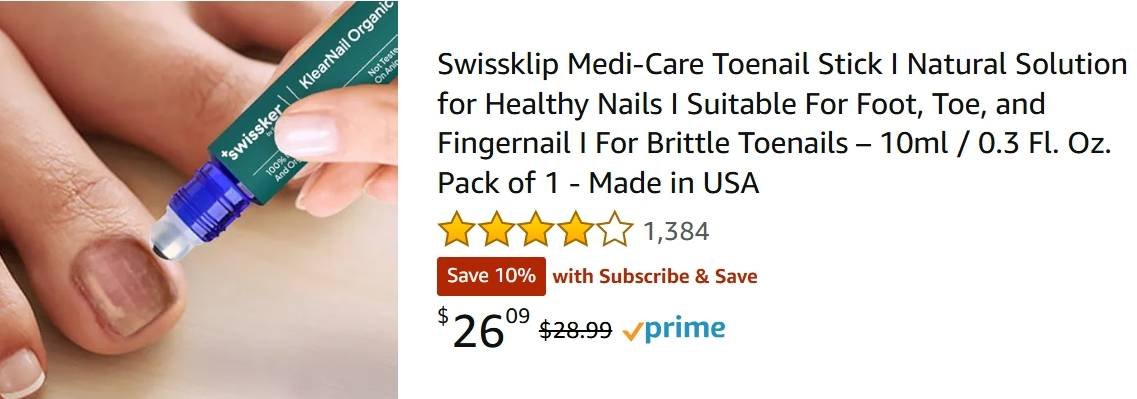Can Thick Toenails Be a Sign of a More Serious Condition?
Find a Podiatrist Near You
Get same-day appointments with verified podiatrists. Insurance accepted.
Thick toenails are often dismissed as a cosmetic issue, but they can indicate an underlying health problem. While aging and fungal infections are common causes, persistent thickening can signal a more serious condition. Identifying the root cause is essential for effective treatment and overall foot health.

Common Causes of Thick Toenails
1. Fungal Infections (Onychomycosis)
Fungal infections are a leading cause of thickened, discolored nails. The infection starts beneath the nail, causing it to turn yellow, brittle, and crumbly. If left untreated, the nail may detach from the nail bed.
In the YouTube video below “Onychomycosis | How to Deal with Nail Fungus” (Nails Sakramel, Apr 10, 2023), the creator walks through what onychomycosis looks like, how to spot it early, and practical steps to manage it effectively.
2. Psoriasis and Other Skin Conditions
Psoriasis, eczema, and lichen planus can affect nail growth, leading to thickened, pitted, or ridged nails. In psoriatic arthritis, nail thickening is often accompanied by joint pain and swelling.
3. Nail Trauma or Repeated Pressure
Frequent injury, ill-fitting shoes, or repetitive stress from sports can cause the nail to thicken. The body responds to trauma by increasing keratin production, leading to abnormal nail growth.
4. Poor Circulation and Diabetes
Diabetes and peripheral artery disease (PAD) reduce blood flow to the feet. Poor circulation weakens nails, making them thick, brittle, and prone to infections. Unmanaged diabetes increases the risk of foot ulcers and complications.
5. Yellow Nail Syndrome
A rare condition, yellow nail syndrome causes nails to grow thick, slow, and discolored. It is often linked to respiratory issues like chronic bronchitis and lymphedema (fluid retention and swelling in the limbs).
When Thick Toenails Indicate a More Serious Condition
Diabetes and Peripheral Neuropathy
Thickened nails in diabetics may signal poor circulation and nerve damage. This condition, known as peripheral neuropathy, reduces sensation in the feet, increasing the risk of unnoticed infections and ulcers.
Peripheral Artery Disease (PAD)
PAD causes restricted blood flow, leading to slow-growing, thick toenails. If left untreated, PAD can result in severe foot complications, including tissue death and the need for amputation.
Autoimmune Diseases
Conditions like lupus and rheumatoid arthritis can trigger nail changes. Thick, ridged, or brittle nails may be early warning signs of an underlying autoimmune disorder.
Fungal Infections That Won’t Heal
Persistent fungal infections that don’t respond to treatment may point to a weakened immune system. People with conditions like HIV, cancer, or chronic illnesses are more susceptible to severe fungal infections.
How to Treat Thickened Toenails
1. Treating Fungal Infections
- Topical treatments: Antifungal creams and medicated nail lacquers can help mild cases.
- Oral antifungal medications: More severe infections may require prescription pills like terbinafine or itraconazole.
- Laser therapy: A non-invasive option that targets fungal spores without harming the nail.
2. Managing Nail Thickening from Skin Conditions
- Psoriasis treatments: Corticosteroids, biologics, and UV light therapy help control nail psoriasis.
- Moisturizing: Hydrating creams with urea soften nails and reduce brittleness.
- Gentle nail care: Keeping nails trimmed and smooth prevents further damage.
3. Addressing Circulation Problems
- Exercise regularly: Physical activity promotes blood flow to the feet.
- Manage diabetes or PAD: Controlling blood sugar and improving circulation can prevent further nail damage.
- Foot hygiene: Keeping feet clean and dry reduces infection risks.
When to See a Doctor
If thick toenails are painful, continue worsening, or are accompanied by symptoms like swelling, discoloration, or numbness, consult a doctor. A podiatrist can diagnose the cause and recommend appropriate treatment.
Final Thoughts
Thick toenails are not always just a cosmetic issue. They can indicate fungal infections, circulation problems, or serious medical conditions like diabetes or autoimmune diseases. Identifying the cause early and seeking proper treatment ensures healthier nails and overall foot health. If at-home care doesn’t improve the condition, a medical evaluation is essential to prevent complications.
Ready to See a Podiatrist?
Connect with top-rated podiatrists in your area. Book appointments instantly with verified doctors who accept your insurance.
Same-Day Appointments
Get seen today with urgent care availability
Verified Reviews
Real patient reviews and ratings
Insurance Accepted
Most major insurance plans covered
